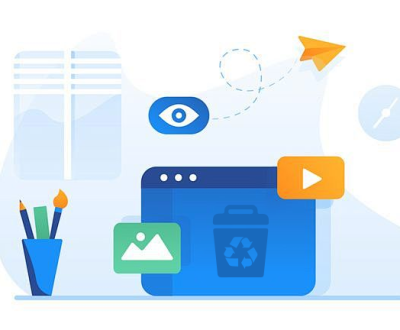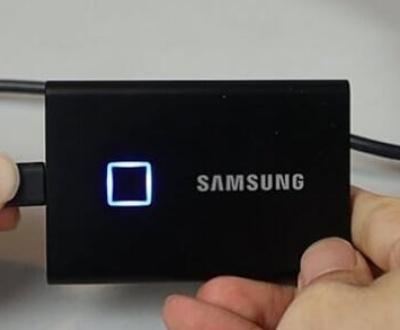They are used by students, professionals, creatives, and everyday users alike. Among the most trusted brands in this realm is Seagate a company renowned for its durable and efficient external hard drives. But like any electronic device, Seagate drives are not immune to issues. One of the more disconcerting problems that users occasionally encounter is a beeping sound coming from their drive.
This beeping noise can occur under various circumstances and may point to a range of problems, from insufficient power supply to internal mechanical failure. Often, this issue renders the drive undetectable by the computer, compounding user anxiety. While hearing your Seagate external hard drive beep can be frustrating and worrying, it doesn’t always spell disaster. In many cases, it’s a sign of a relatively minor issue that can be resolved without professional repair services.

Chapter 1: Beeping Sound
Beeping sounds in external hard drives are not common, which makes them particularly alarming when they do occur. Unlike internal components like fans or speakers that naturally emit sound, hard drives operate in near silence. When a beeping noise arises, it typically signifies an operational anomaly.
Why Hard Drives Beep
Hard drives beep due to mechanical or electrical issues. Unlike error messages on a computer screen, a beep is a physical indicator, usually pointing toward a hardware-related problem. The drive may be trying to spin up but failing due to various reasons:
Insufficient power
Stuck read/write heads
Spindle motor failure
Damaged PCB (Printed Circuit Board)
Loose or faulty USB cable
Characteristics of Beeping
The beep might sound like a short chirp, a continuous tone, or a rhythmic ticking sound. Paying attention to the nature and frequency of the beeps can provide useful clues:
Single, repeated beeps: Often due to power issues.
Grinding or chirping noises: Possible internal mechanical problems.
Continuous tone: Hardware failure or firmware corruption.
Understanding these variations can help narrow down the problem, making it easier to apply the correct fix.
Chapter 2: Common Causes of a Beeping Seagate External Hard Drive
1. Inadequate Power Supply
This is the most common cause of beeping in Seagate external hard drives, especially in portable drives powered solely via USB. If the drive doesn’t receive enough power to spin up, it may emit a beep as it struggles to initialize.
Symptoms:
Beeping starts when connected to a USB port.
Drive not spinning.
Not recognized by the computer.
Causes:
Weak or damaged USB port.
Using a USB hub instead of direct connection.
Faulty USB cable.
2. Mechanical Failure
Beeping can also indicate mechanical issues such as:
Stuck spindle motor: Prevents the platter from spinning.
Stuck read/write head: Head may be parked incorrectly or jammed.
Head crash: Read/write head has come into contact with the platter.
These issues often occur when the drive is dropped or jarred.
3. PCB (Printed Circuit Board) Issues
The PCB is the electronic brain of the hard drive. If it’s damaged, either due to a power surge or overheating, the drive may beep as it attempts and fails to initialize.
Signs:
Burning smell.
No power indication.
Continuous beeping without spinning.
4. Firmware Corruption
Sometimes the drive’s internal firmware becomes corrupted, which can lead to repeated reboot cycles and beeping as the device tries to load itself unsuccessfully.
5. USB Cable or Port Issues
A faulty USB cable can cause connectivity issues that result in insufficient power or inconsistent signals, prompting a beeping sound.
Chapter 3: Troubleshooting and Fixes
Step 1: Check the USB Port and Cable
Try a different USB cable (preferably the one that came with the drive).
Use a different USB port—avoid USB hubs or low-power laptop ports.
Use USB 3.0 ports if available for better power delivery.
If switching cables or ports stops the beeping and the drive powers up, the issue was likely due to insufficient power.
Step 2: Try a Powered USB Hub or Y-Cable
For portable drives that rely solely on USB for power:
Use a powered USB hub that provides its own power source.
Try a USB Y-cable this draws power from two USB ports, ensuring adequate power supply.
Step 3: Connect to a Desktop PC
Desktops generally offer more stable and powerful USB connections than laptops. If your drive works on a desktop, the problem likely lies with your laptop’s power output.
Step 4: Listen to the Beeps
Short, rhythmic beeps: Usually power-related.
Clicking or grinding: Likely internal mechanical failure.
No sound and no spin: Potential PCB issue.
Use these audio clues to identify if it’s a fixable issue or if professional help is required.
Step 5: Check Disk Management or Disk Utility
On Windows:
Press Win + X > Disk Management.
Check if the drive appears (even as unallocated or raw).
On macOS:
Open Disk Utility (Applications > Utilities).
See if the drive is listed.
If the drive appears here but not in File Explorer/Finder, you may be dealing with file system corruption rather than a physical issue.
Step 6: Try on Another Computer
Connecting your Seagate external drive to a different system can help isolate whether the issue is with your computer, port, or the drive itself.
Step 7: Recovery Software (Only If Detected)
If the drive is recognized by your computer (even partially), use recovery tools such as:
Seagate SeaTools
Recuva
EaseUS Data Recovery
Panda Data Recovery
These tools can often recover files from a failing or partially readable drive.
Chapter 4: Advanced Fixes
Professional Data Recovery Services
If the drive has suffered a head crash, spindle damage, or PCB failure, DIY fixes can worsen the damage. In such cases, professional data recovery services are your safest bet. These services open the drive in clean rooms and can often recover 90–100% of data from damaged drives.
Trusted services:
Seagate’s own Rescue Data Recovery.
DriveSavers.
Ontrack.
Gillware.
Replacing the PCB
This is a risky and technical move but might work if:
The drive isn’t spinning at all.
There’s no sound or beeping.
Visual inspection shows a burnt chip.
Important: You must find an exact PCB match, and sometimes transfer the ROM chip from the old board to the new one.
Freezing the Drive (Myth or Fix?)
Some users claim that placing the drive in a ziplock bag and freezing it for a few hours can temporarily fix a stuck spindle or head. While this may work in rare cases, it is not recommended, as condensation can ruin the internal components.
Tap or Shake (With Caution)
Lightly tapping the side of the drive while it beeps may help free a stuck head, but again—this is risky and should only be tried if all data is backed up or if you’re out of options.
Chapter 5: Preventing Future Beeping Issues
Prevention is the best cure. Here’s how to avoid hard drive problems in the future:
1. Always Eject Properly
Don’t just unplug the drive. Use “Safely Remove Hardware” (Windows) or “Eject” (macOS) to avoid corrupting the drive’s firmware or filesystem.
2. Avoid Physical Shock
Keep your drive on a stable surface. Avoid moving it while it’s in use. Invest in a padded case if you travel with your drive.
3. Backup Regularly
Use backup software or cloud storage to keep a second copy of your data. That way, even if your drive fails, your data is safe.
4. Monitor Drive Health
Use tools like:
Seagate SeaTools
CrystalDiskInfo
SMART monitoring tools
These can alert you to early signs of failure.
5. Use the Correct Cable and Port
Always use the manufacturer-recommended cable. Avoid third-party cables unless they are high quality.
A beeping Seagate external hard drive can certainly set off alarm bells pun intended but it’s not always a death sentence for your data. As this guide has shown, many beeping issues stem from something as simple as an inadequate power supply or a faulty cable. Others may require more advanced troubleshooting or even professional recovery services.
The key is not to panic. Methodically testing your drive on different ports, with different cables, and using diagnostic tools can often pinpoint the issue. If the drive contains vital data, resist the urge to force it to work this could cause irreparable damage. Instead, turn to data recovery services or consult with a technician.
About us and this blog
Panda Assistant is built on the latest data recovery algorithms, ensuring that no file is too damaged, too lost, or too corrupted to be recovered.
Request a free quote
We believe that data recovery shouldn’t be a daunting task. That’s why we’ve designed Panda Assistant to be as easy to use as it is powerful. With a few clicks, you can initiate a scan, preview recoverable files, and restore your data all within a matter of minutes.
Subscribe to our newsletter!
More from our blog
See all postsRecent Posts
- How to recover deleted voicemail samsung? 2025-04-22
- Samsung portable ssd t5 online recovery 2025-04-22
- Fix western digital external hard drive 2025-04-22

 Try lt Free
Try lt Free Recovery success rate of up to
Recovery success rate of up to









